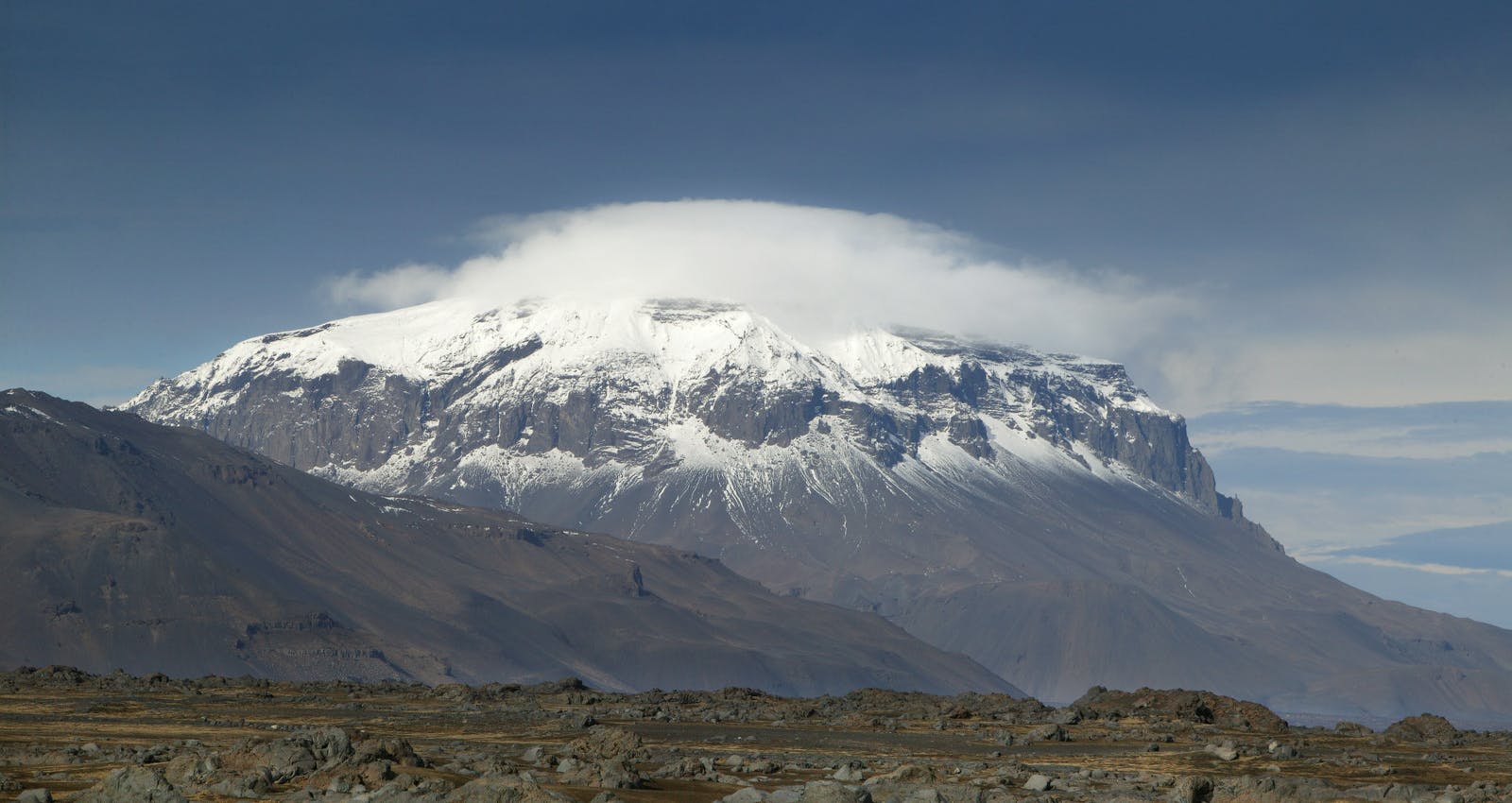
Guide to Herðubreið
Herðubreið is a prominent and distinctive mountain located in the northeastern part of Iceland, within the rugged Icelandic highlands. Herðubreið was formed beneath the ice sheet that covered Iceland during the last glacial period. Often referred to as the “Queen of Icelandic Mountains,” Herðubreið is known for its unique shape, cultural significance, and the surrounding landscape.
Where is Herðubreið Located?
Herðubreið sits in the northern part of Vatnajökull National Park, inside the Ódáðahraun lava field and close to Askja volcano. The park encompasses diverse landscapes, including glaciers, volcanoes, lava fields, and more.
What is Special About Herðubreið?
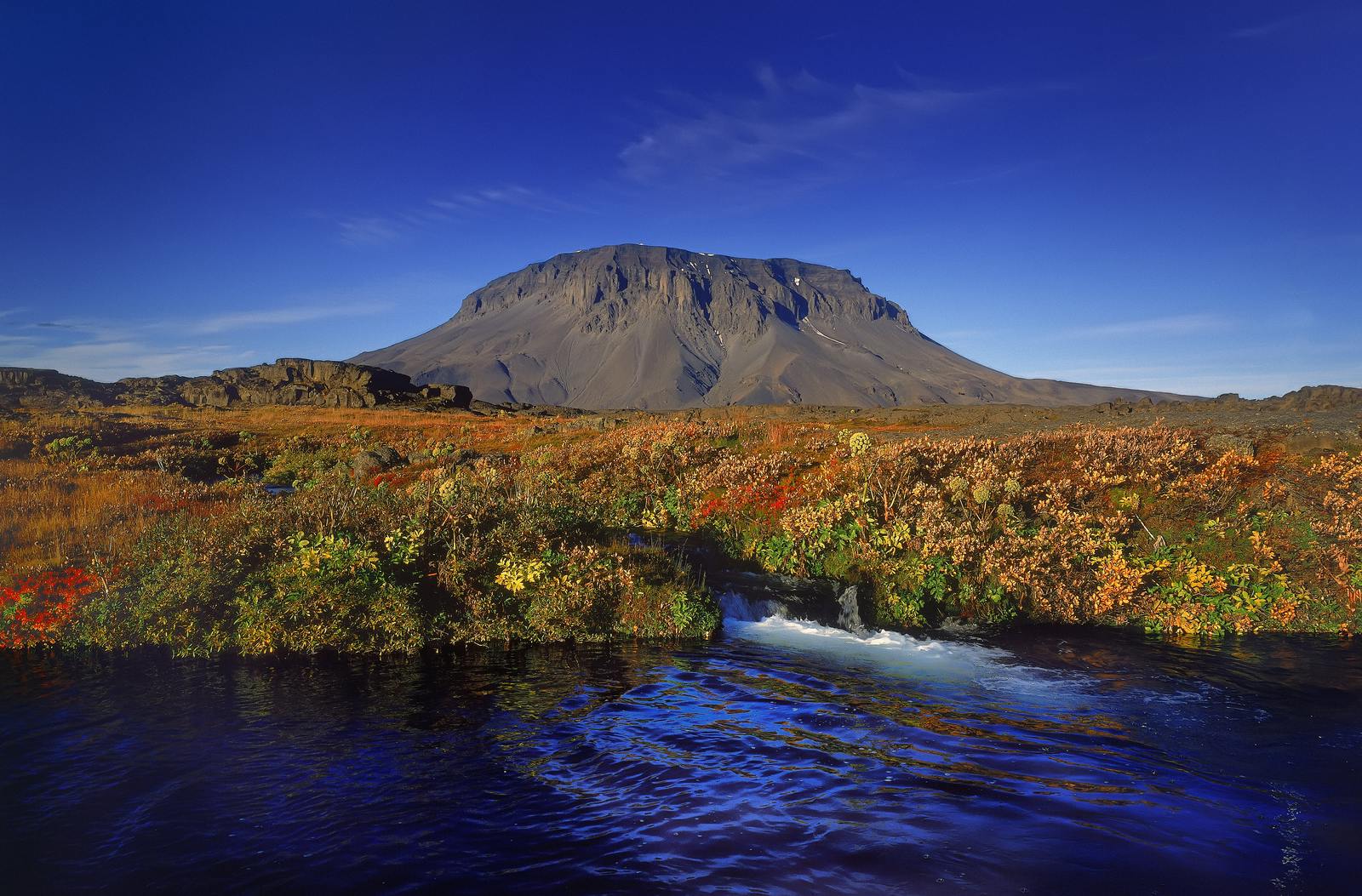
The most unique aspect of Herðubreið is its distinct shape; a flat top is surrounded by steep cliffs, giving the mountain the appearance of a fortress rising abruptly from the surrounding landscape. This remarkable shape makes Herðubreið one of the most recognisable mountains in all of Iceland.
Can You Hike on Herðubreið?
While reaching the summit of Herðubreið is challenging and not recommended, the area around the mountain offers hiking opportunities. There are hiking trails that allow you to explore the base of the mountain and enjoy its impressive shape. Keep in mind that the area is remote and often requires some preparation, as well as adherence to Leave No Trace principles.
What Type of Mountain is Herðubreið?
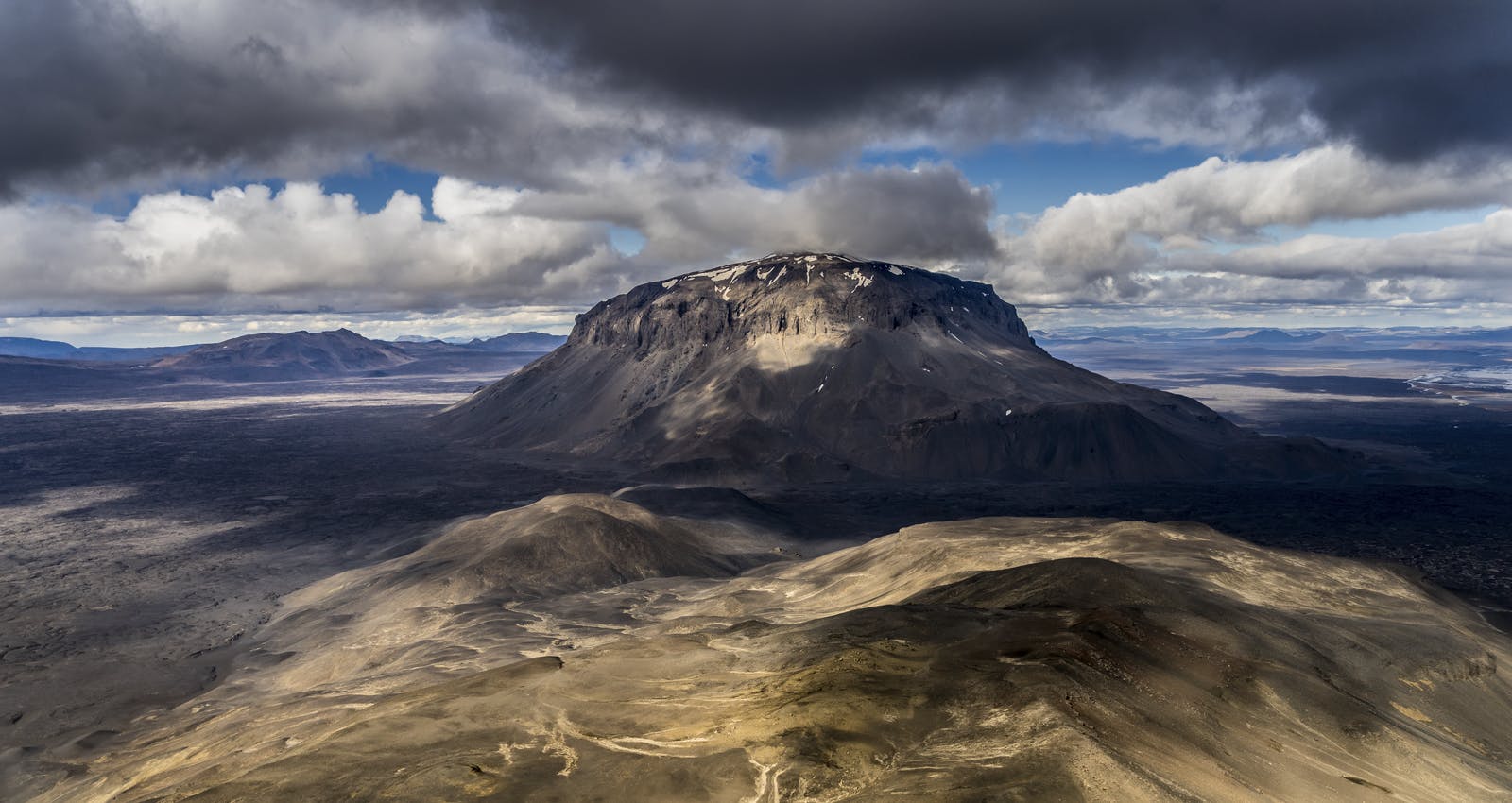
Herðubreið is a table mountain, also known as a “tuya” or “flat-topped mountain.” It was formed through a combination of volcanic activity and glacial erosion. The eruption started below a thick glacier. It melted the ice and built up a high mountain that finally reached through the glacier. Then the eruption ended by building up a cone shaped top made of ordinary lava. The mountain features steep cliffs on most sides, with a relatively flat and gently sloping top with a deep crater.
Where Can You Learn About Mountains and Volcanoes in Iceland?
Perlan’s Forces of Nature exhibition allows guests to feel the power of volcanoes, earthquakes, and geothermal energy that powers the island. Guests will learn that volcanoes form when heat and pressure build up beneath the earth’s surface. The earth’s weak points tend to be along fault lines where tectonic plates converge or diverge, as in Iceland’s case.
Perlan’s exhibition shows that volcanic activity in Iceland is so diverse that researchers typically speak of “volcanic systems” rather than individual volcanoes. The island has 30 active volcanic systems, each with many types of volcanoes. Perlan also has exhibitions featuring ice caves, northern lights and geology.
Iceland is one of the most volcanically active regions in the world — if you’re curious which ones are still rumbling, explore the active volcanoes in Iceland.
What Attractions are Close to Herðubreið?
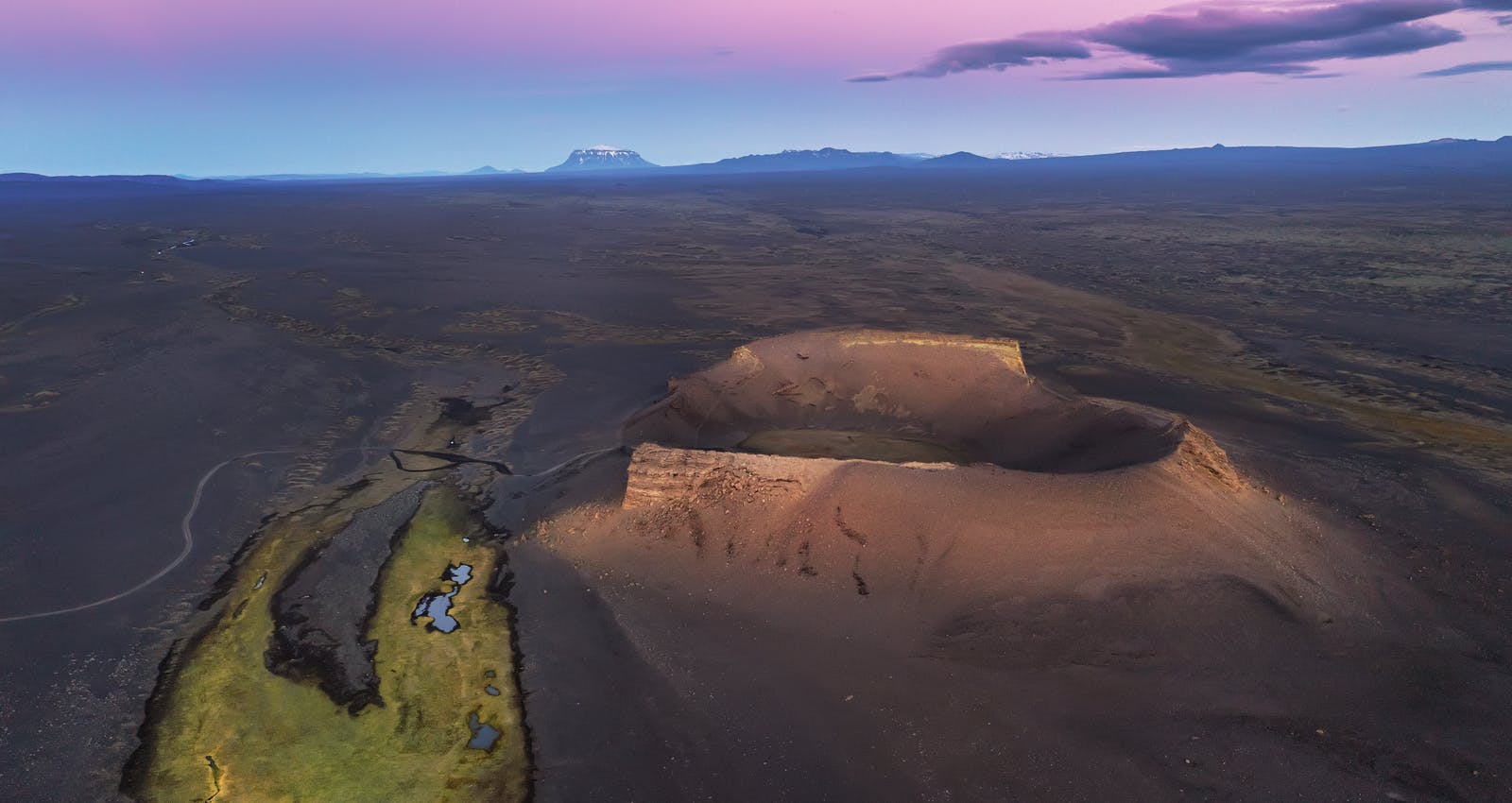
Askja Caldera
Askja is one of the most famous geological features in the Icelandic highlands. It’s a massive volcanic caldera with a central lake called Öskjuvatn; the area includes Víti, a geothermal crater lake, and Holuhraun, a lava field resulting from the 2014–2015 eruption.
Herðubreiðarlindir
An oasis located at the base of Herðubreið known for its lush vegetation, sparkling springs, rivers, and diverse birdlife, Herðubreiðarlindir offers a stark contrast to the barren surroundings.
Vatnajökull National Park
In 2019, Herðubreið became a part of Vatnajökull National Park. Vatnajökull National Park is one of Iceland’s most extensive and diverse parks, as it encompasses glaciers, volcanoes, hot springs, lava fields, and more, offering a wide range of outdoor experiences.
Kverkfjöll
Kverkfjöll is another volcanic area nearby, located at the edge of Vatnajölkull and known for its ice caves and geothermal activity. The Kverkfjöll mountain range is part of Vatnajökull National Park and offers unique hiking opportunities in a remote and untouched environment.
FAQ
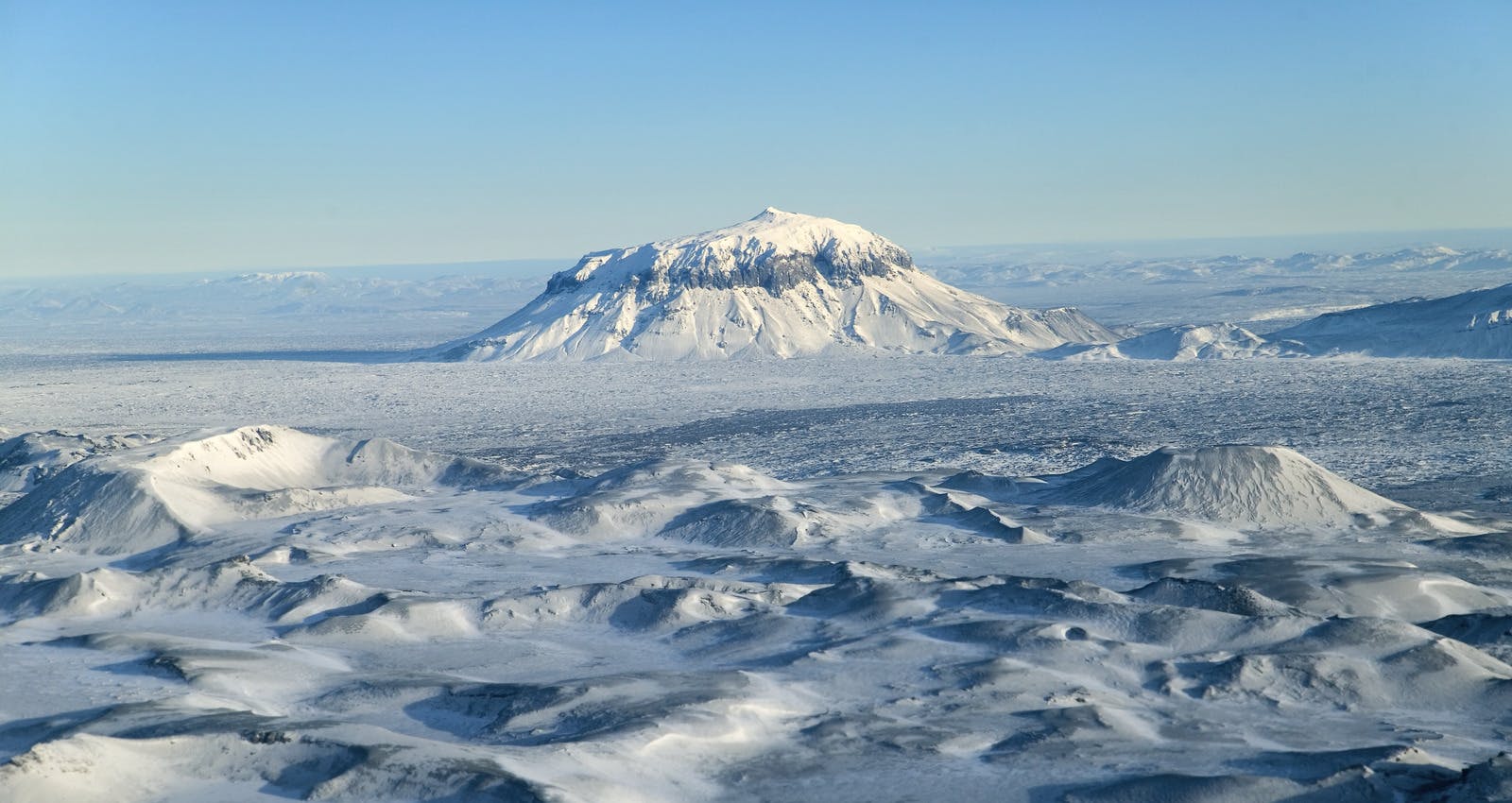
Does Herðubreið have a nickname?
The mountain is often referred to as “The Queen of Icelandic Mountains” by Icelanders due to its beautiful, unique shape and because how large and conspicuous she is.
Does Herðubreið have cultural significance?
The mountain has been a source of inspiration for artists, poets, and writers throughout the ages and it holds a place in the hearts of many Icelanders.







